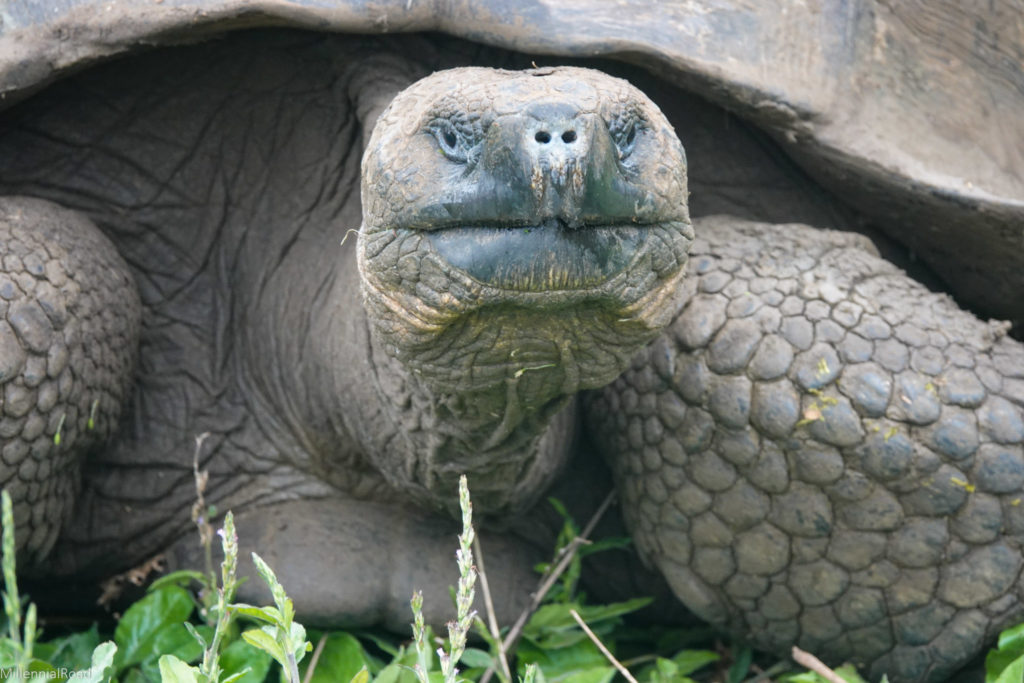
From the most populated island, Santa Cruz, to the largest and youngest island, Isabela Island, there was no shortage of unique and diverse experiences during the few days we spent exploring these islands. Tortoises, sharks, owls, sea lions, iguanas, and flamingos are only a few of the animals that can be seen on these noteworthy islands.
Charles Darwin Research Station on Santa Cruz Island
Beginning the eighth day of our cruise with a visit to the Charles Darwin Research Station in Santa Cruz Island was informative, to say the least.
The Charles Darwin Foundation promotes scientific research and conservation of the environment in the Galápagos, playing a significant role in helping maintain healthy populations of the Galápagos Tortoise.
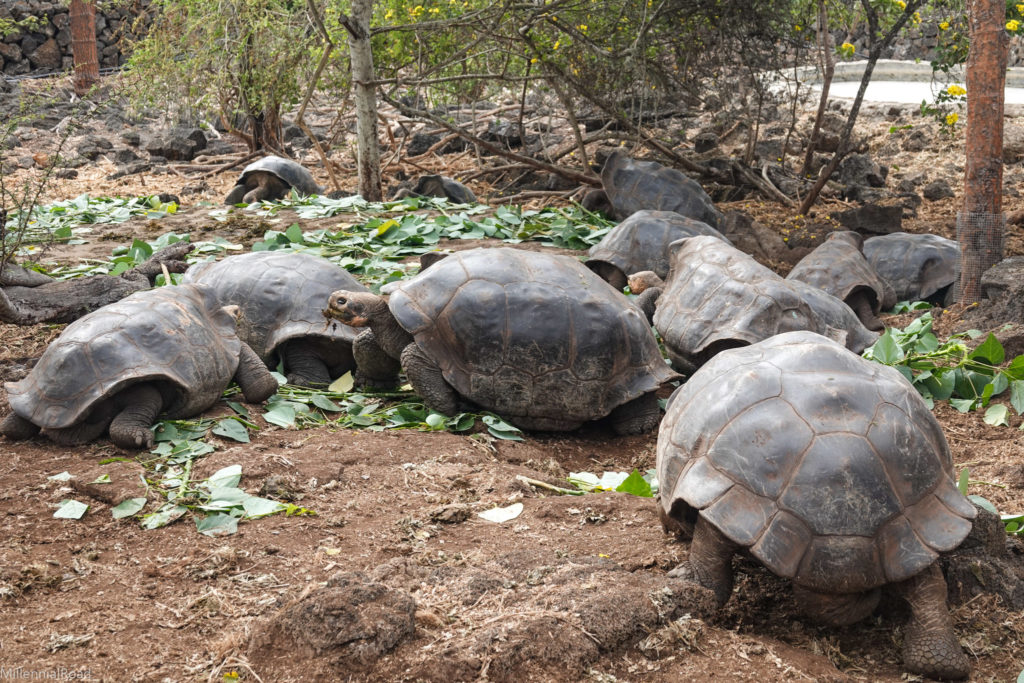
We learned more about the restoration and conservation efforts in the Galápagos as we browsed the presentations. One of the indoor exhibits available for viewing is the “mummy” of Lonesome George, the last tortoise of his species. I’ll spare you the picture of the tortoise mummy.
The complex included a handful of informational exhibits, but the most interesting part was the outdoor areas where you could see firsthand some of the work being done to preserve delicate wildlife in the Galápagos.
As we wandered around the grounds outside, we came across tortoises of varying species and ages in different areas. In the most adorable section, baby tortoises crawled over one another feasting on leaves as big as them.
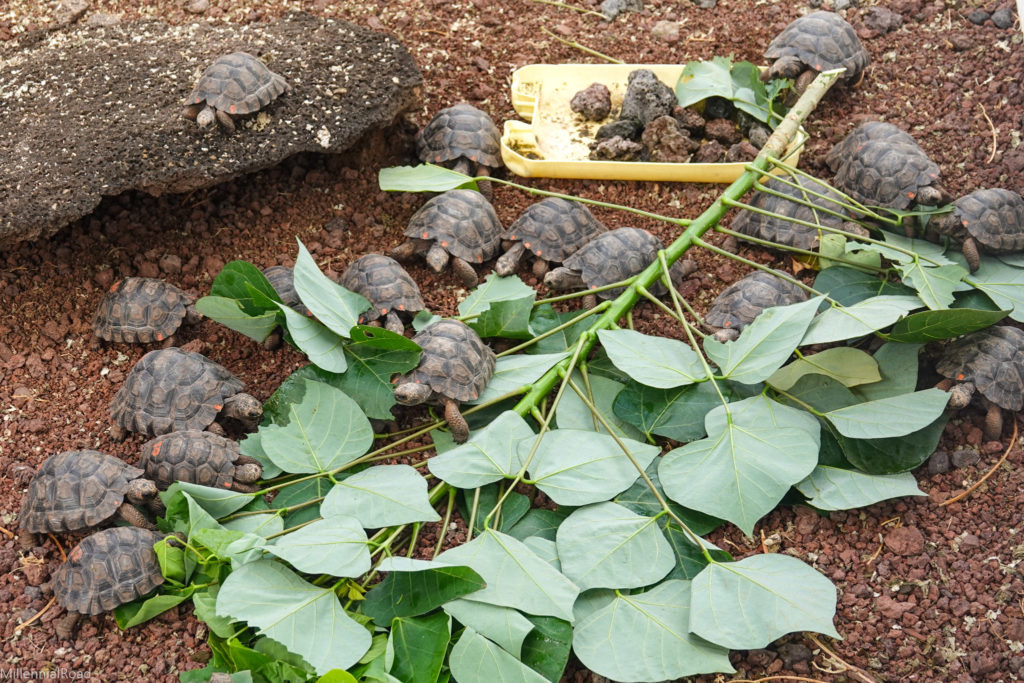
There aren’t many famous tortoises, to my knowledge anyway. But if one living tortoise has garnered fame, it would be Diego—a male tortoise with a well-known reputation for breeding an astronomical number of offspring.
Diego was responsible for fathering hundreds of tortoises as part of a breeding program to help save his species from extinction. Having successfully done his job, Diego was “retired” in 2020 and returned to his birth island, Española Island, making our experience meeting him all the more special.
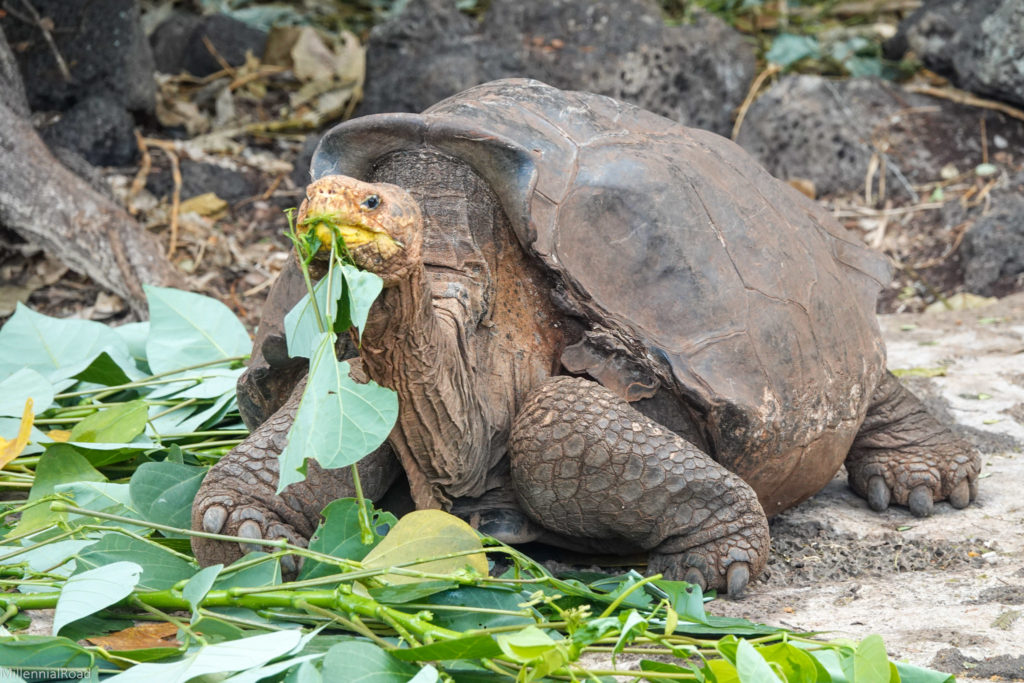
With his long, wrinkly neck and faded yellow mouth, he gnawed on leaves after another hard day at “work” as if he was just any other normal tortoise.
Highlands of Santa Cruz
Seeing wild tortoises roaming freely at a private farm in the Highlands of Santa Cruz felt like a stark contrast to the tortoises in the breeding program at the Charles Darwin Station.
The Highlands of Santa Cruz was, without question, my favorite place to see the giant tortoises. It is a huge property where tortoises roam freely and happily, and an absolute must-do in the Galápagos.
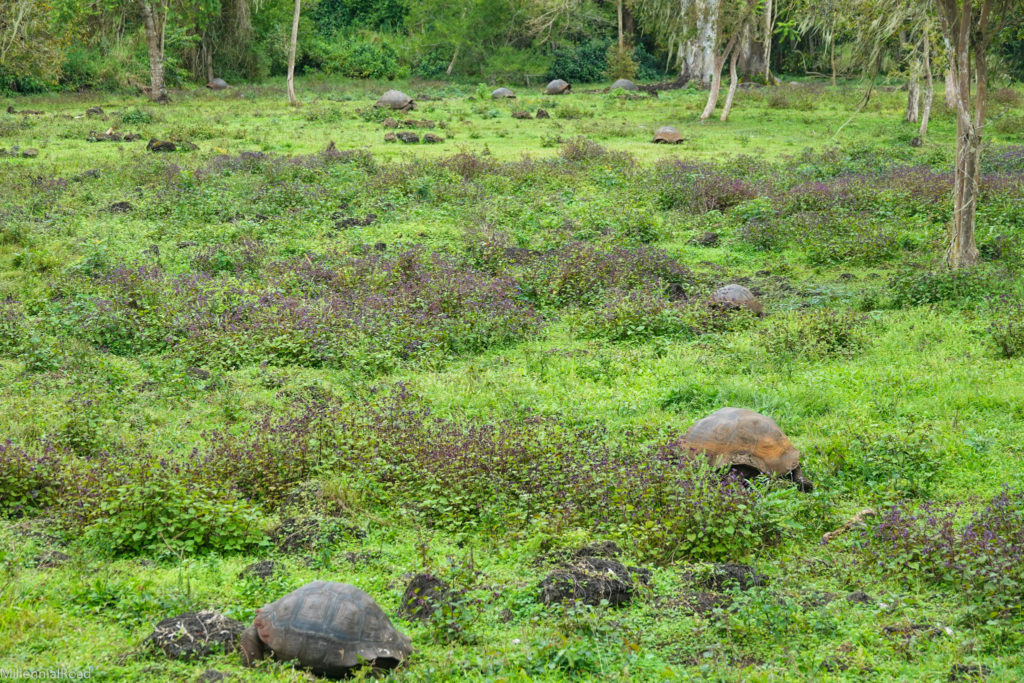
As we hiked across the expansive grounds, there was not a single direction we could look without seeing at least one giant tortoise. Many of the tortoises gathered in swampy pools of water scattered around the property.
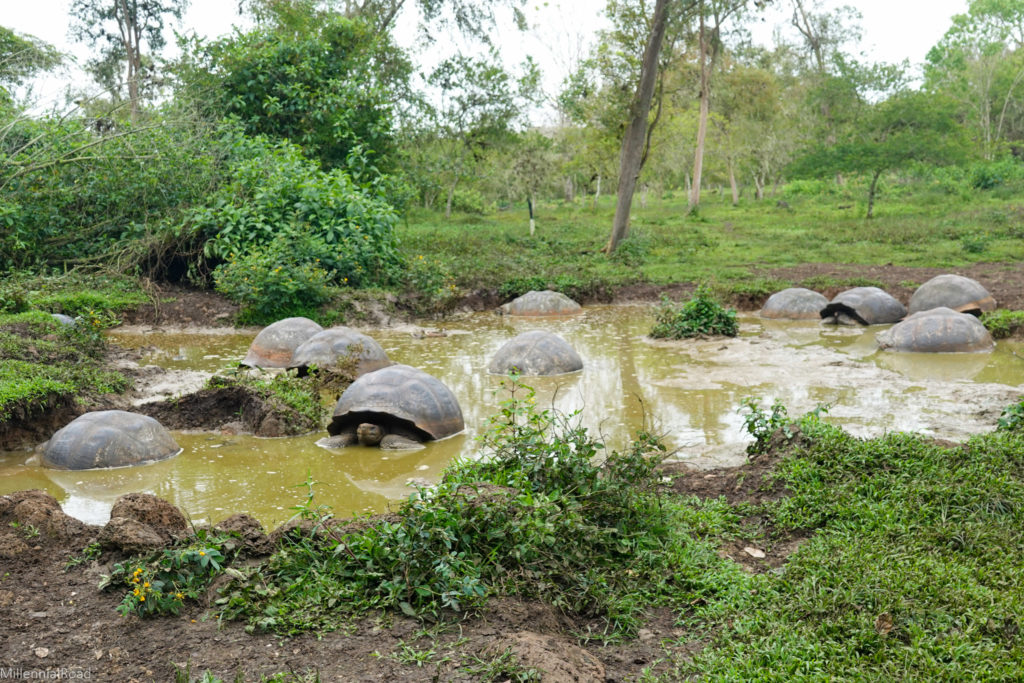
I could never have imagined seeing so many tortoises in my entire life, especially not in just one visit over an hour. Some tortoises easily weighed over 400 pounds. Of course, tortoises of almost every other size could be spotted as well.
From one delight to the next, we followed this with a visit to one of the lava tunnels existing in the area. Just as we entered the tunnel, we came face to face with a Galápagos barn owl.
Given its nocturnal nature, visitors do not often get to see this elusive animal, with its white, heart-shaped face and speckled wings.
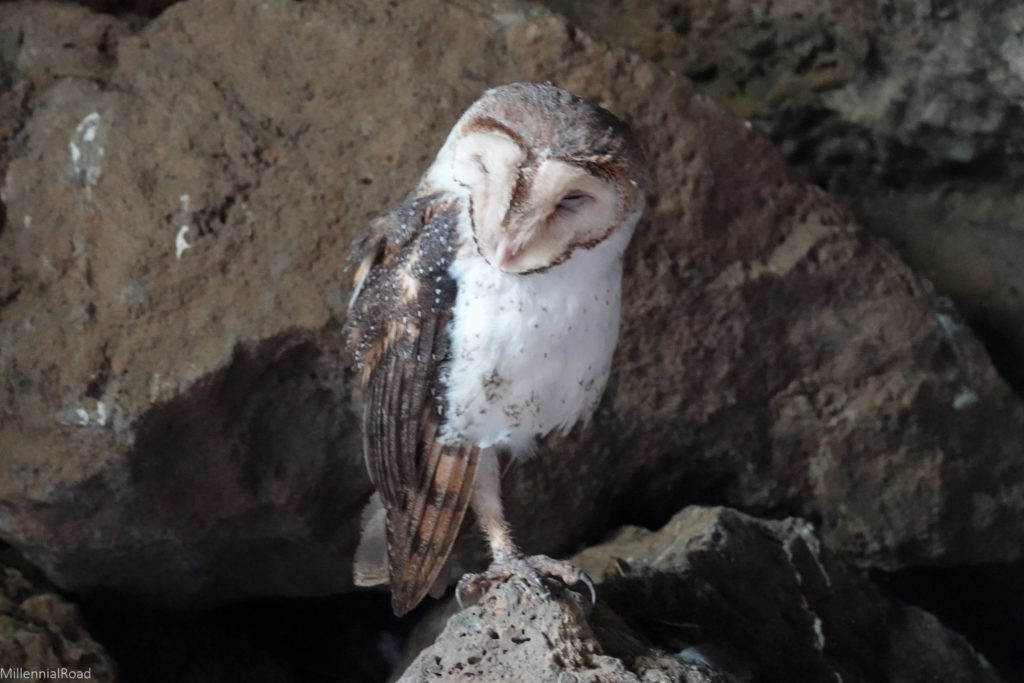
Having no choice but to pass right next to the owl in order to go through the tunnel, we walked by slowly and cautiously, coming within a foot or two of this mysterious predator. It was astonishing that the owl did not seem disturbed by our presence in the least.
Isabela Island: Las Tintoreras
On the ninth day of our cruise, we reached Isabela Island, starting the morning in the town of Puerto Villamil.
Isabela Island is the largest and one of the youngest islands in the Galápagos archipelago. Having less time to develop, the terrain is dramatically different from other islands, with black lava rock laying claim to most of the island.
The first of several hikes of the day, we started with a pleasant stroll at Las Tintoreras, a popular visitor site on Isabela Island. A bay here connects to a shallow crevice of crystal clear water, which changes depths as the tide changes.
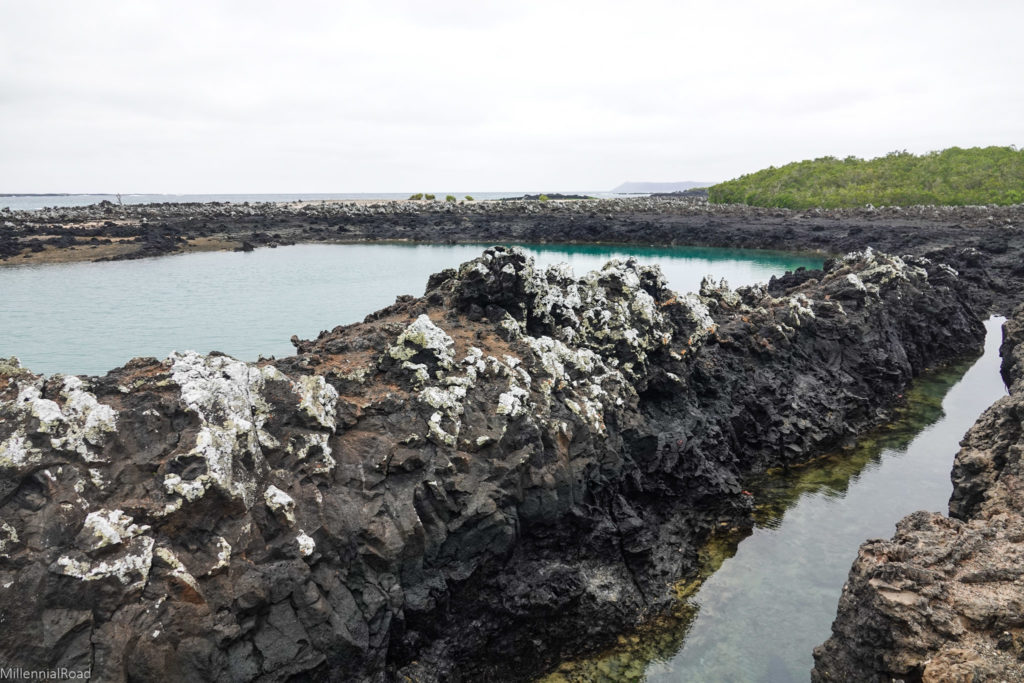
When the tide is low, this creek-like crevice becomes disconnected from the water and any remaining wildlife is cut off from the sea until the tide rises again. On any given day, a dozen or so whitetip reef sharks can be seen resting in this small canal.
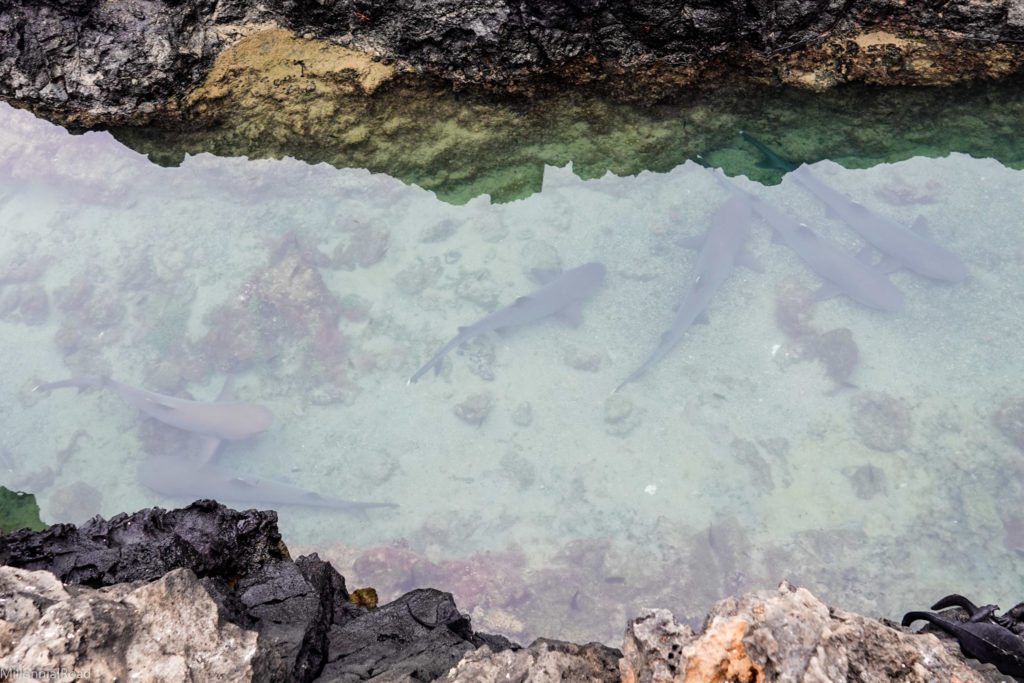
Although most of the island is lava rock, exceptions can be found with a white sand beach and a black stone beach. During our visit, marine iguanas were spread across the white sandy beach, using this safe spot as a nesting site.
There were also colonies of sea lions at the first beach. As always, they looked absolutely adorable lounging together on the beach. We even saw one pair of sea lions spooning! Does it get any more adorable than that?
A forest of mangroves entirely surrounds the second beach, creating a rich green backdrop against the black lava rock and sandy shoreline.
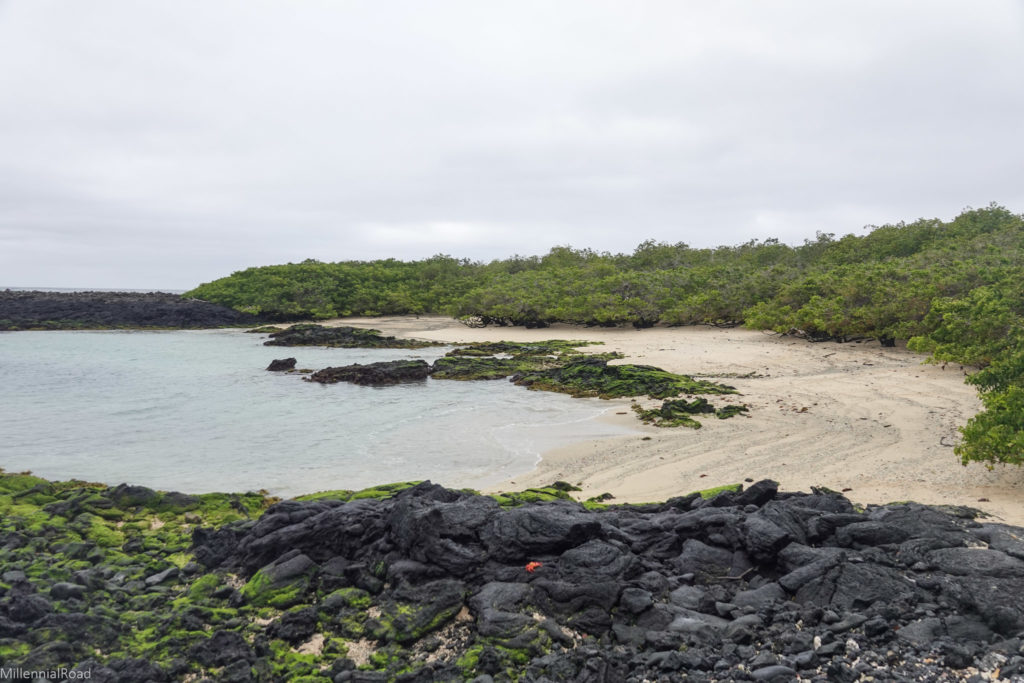
Throughout the trail, we continued to meet countless marine iguanas in the rocks or under the mangroves.
Sierra Negra Volcano, Giant Tortoises and Flamingo Lake
A visit to Sierra Negra Volcano was next on the itinerary. The weather was cold and misty at the low elevation where we began our hike.
I felt unhopeful that we would have a good view of the volcano’s caldera, but our guide seemed oddly optimistic. Sudden, drastic weather changes are common in the Galápagos, so he was counting on clearer skies by the end of the trek.
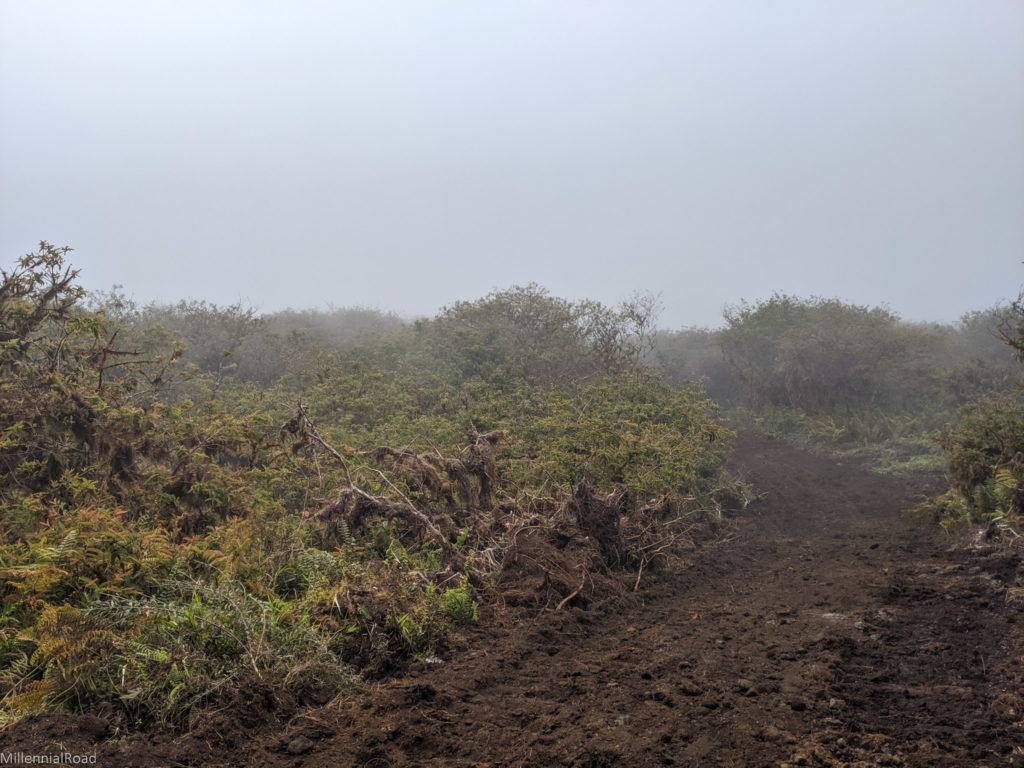
We hiked uphill a decent way, and, about halfway up the hike, all of the clouds cleared. Suddenly, it was a beautiful, hot, sunny day.
As we arrived at the top of the hill, we had a clear view of the caldera. It was massive. The volcano rose up in the distance, with fumaroles spouting steam into the sky in several directions.
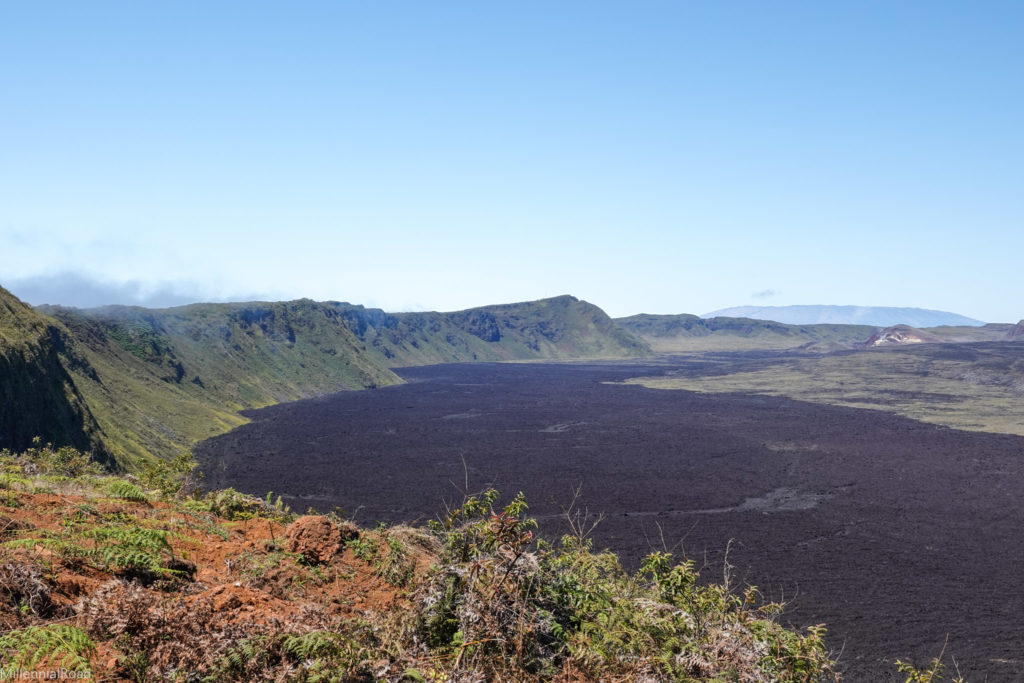
We followed the hike with a visit to the tortoise breeding center on Isabela Island. It felt a bit sadder looking at these tortoises in captivity, but it was interesting to see the different groupings of tortoises by age.

We saw one male tortoise mount a female tortoise and attempt to do his “job” of breeding. Poor thing was unsuccessful and eventually gave up and walked away alone. If you prefer not to have a visual of this, don’t look at the next picture…
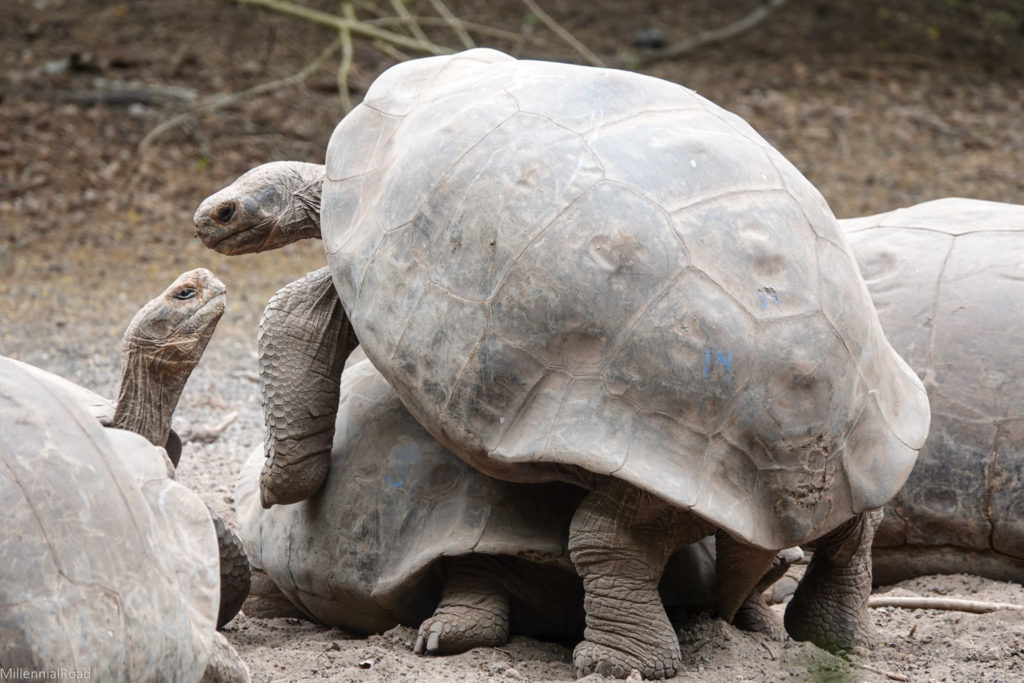
Our last stop of the morning was taking a short walk along a wooden boardwalk trail to see some lagoons right outside of town.
Marine iguanas crawled alongside us and lounged carelessly on the boardwalk, enjoying the sunlight without concern for anyone trying to use the pathway.
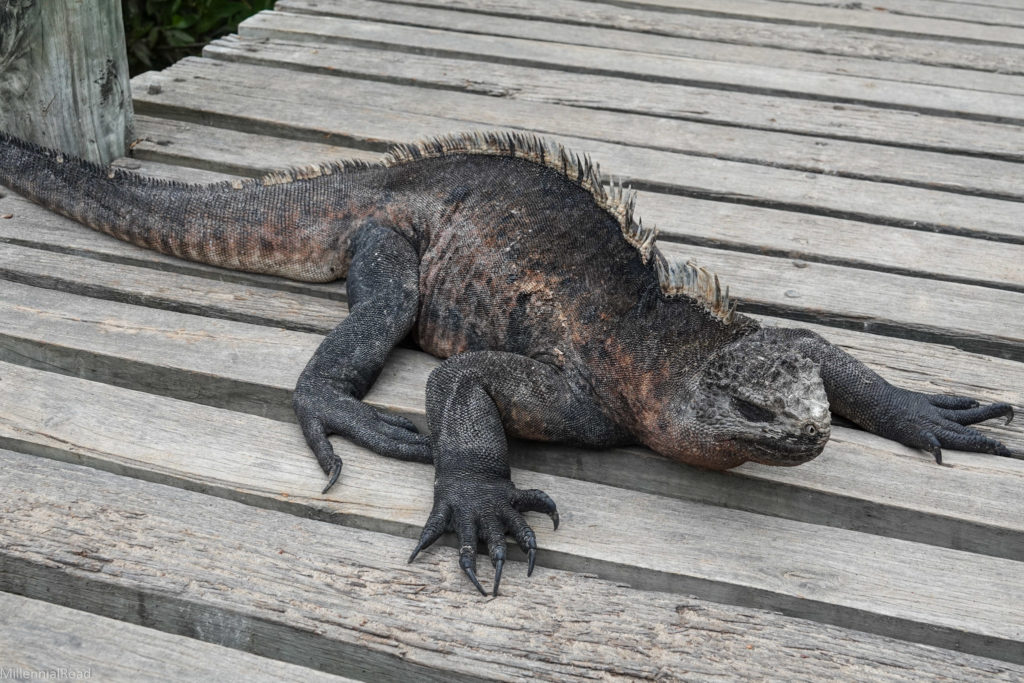
The real highlight of the trek was the string of the saltwater lagoons that small populations of flamingos have decided to call home.
Flamingos can be seen here in large numbers, scattered across the protected and fruitful environment provided by the lagoons.
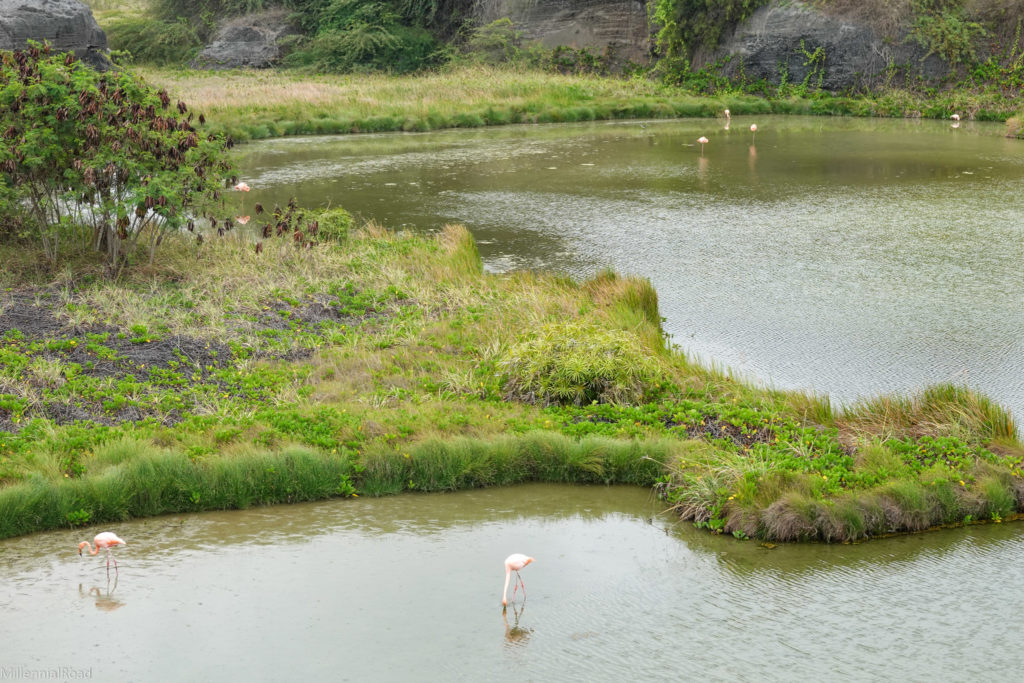
The flamingos on Isabela Island cannot be missed, with their bright pink feathers and large, colorful beaks.
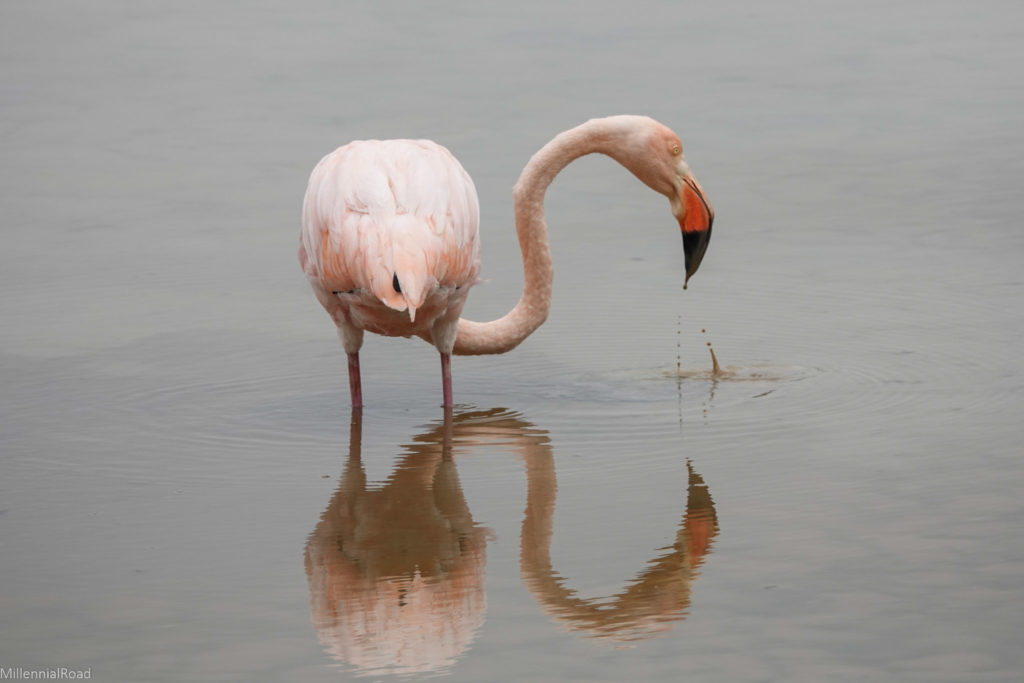
Mud could be seen dripping off of their feet as their trudged through the thick, wet sludge searching for food. Yet, no amount of dirt and mud could detract from the beauty of this elegant creature.
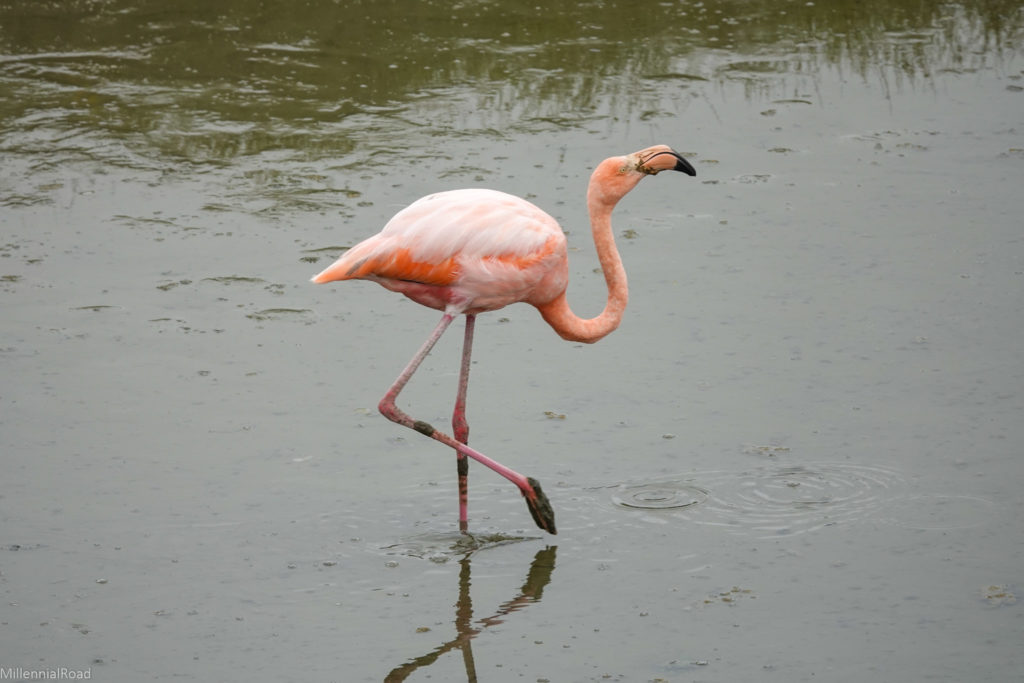
Finishing the day in the tiny but adorable beach town on Isabela Island was the perfect ending to an already wonderful day.
As we strolled along the shoreline taking in the beauty of the sand and lava rocks overlooking the ocean, we couldn’t help but appreciate how lucky we were to be experiencing this glorious place.
Continue following our trip and read about one of the greatest days of our lives on Isabela Island.
If you missed it, go back and read about the epic experience we had snorkeling Devil's Crown at Floreana Island.

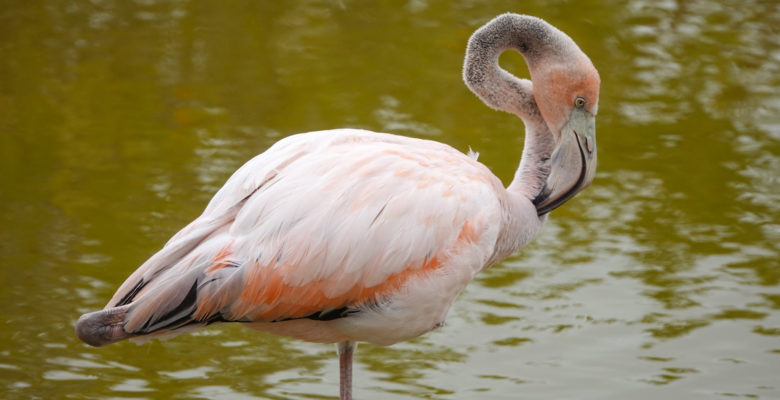
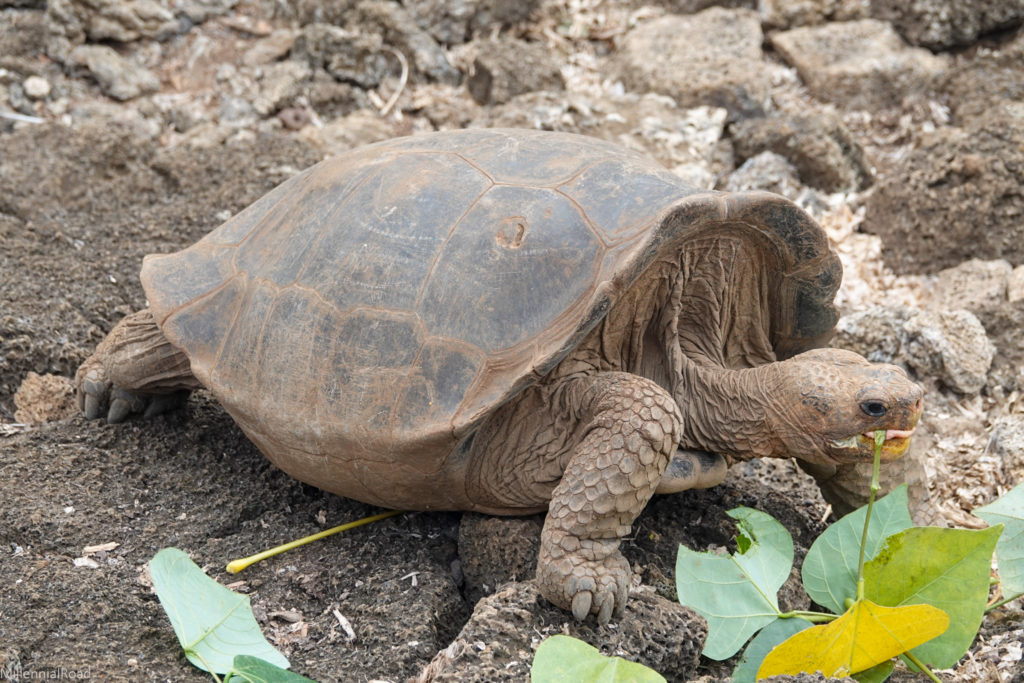

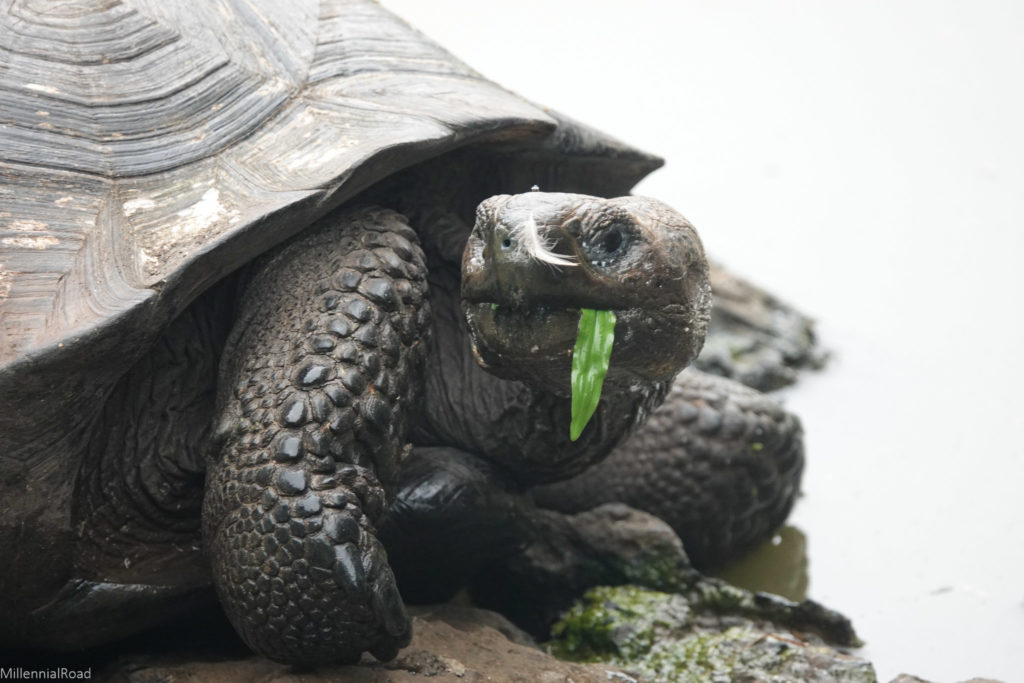
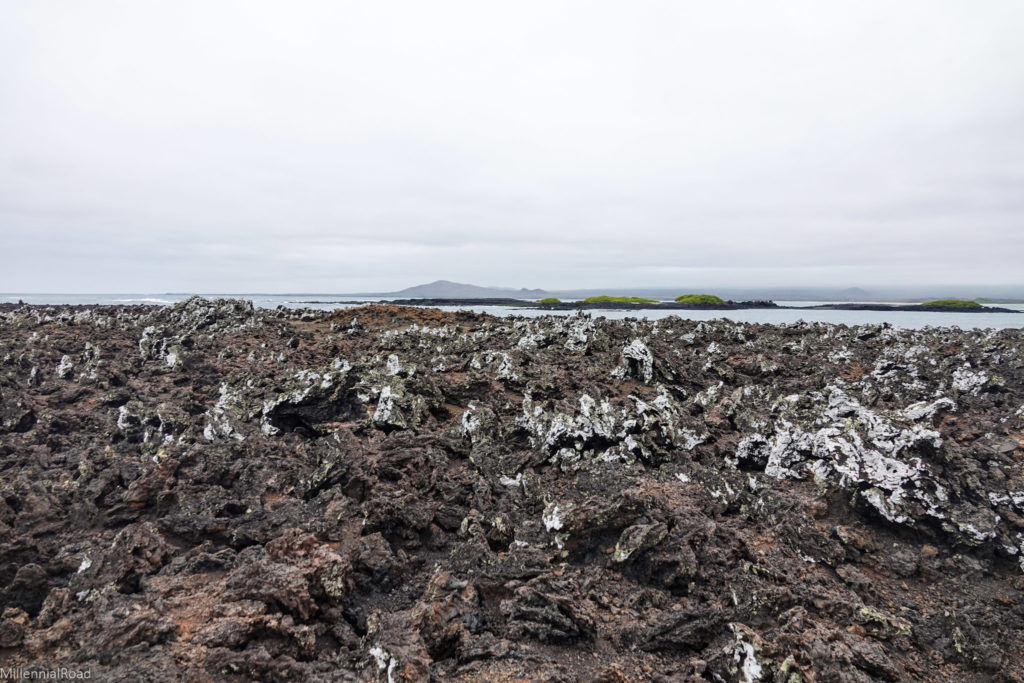

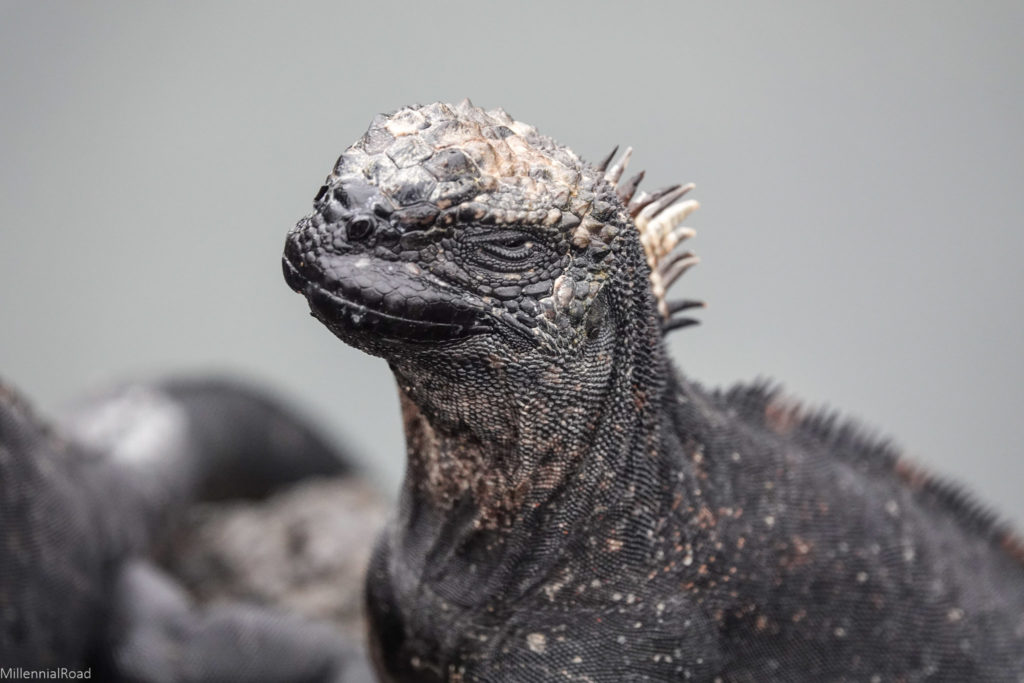
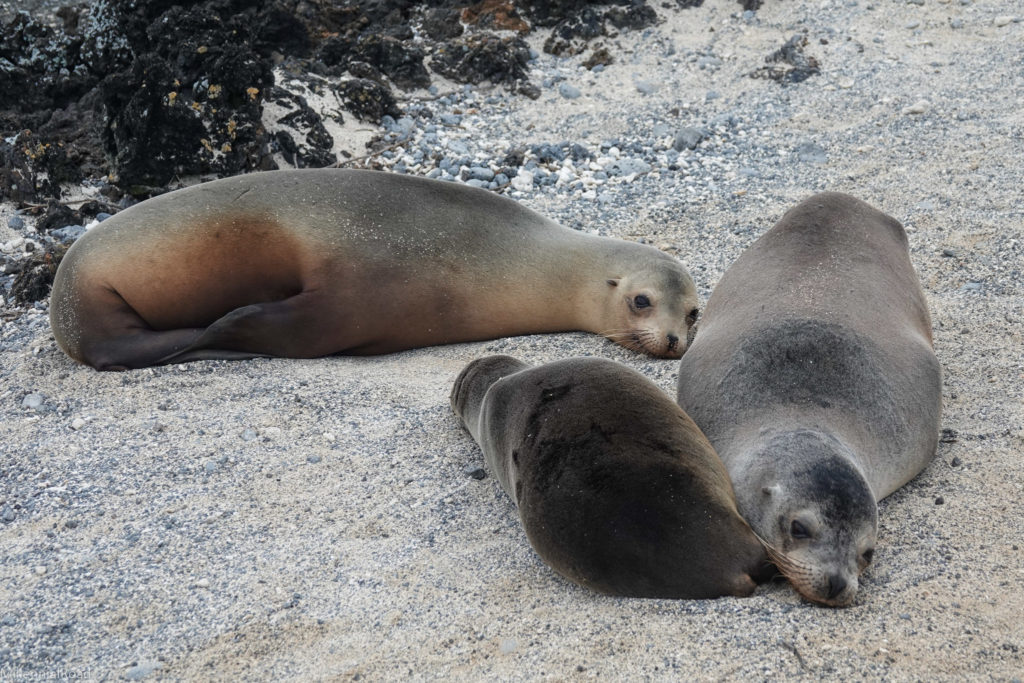
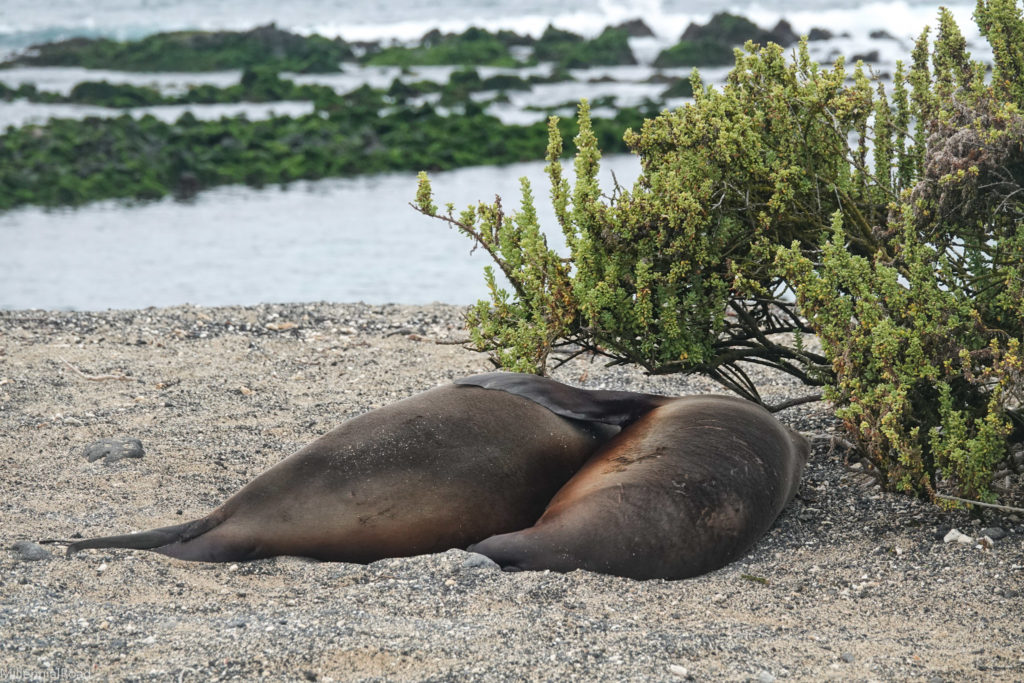
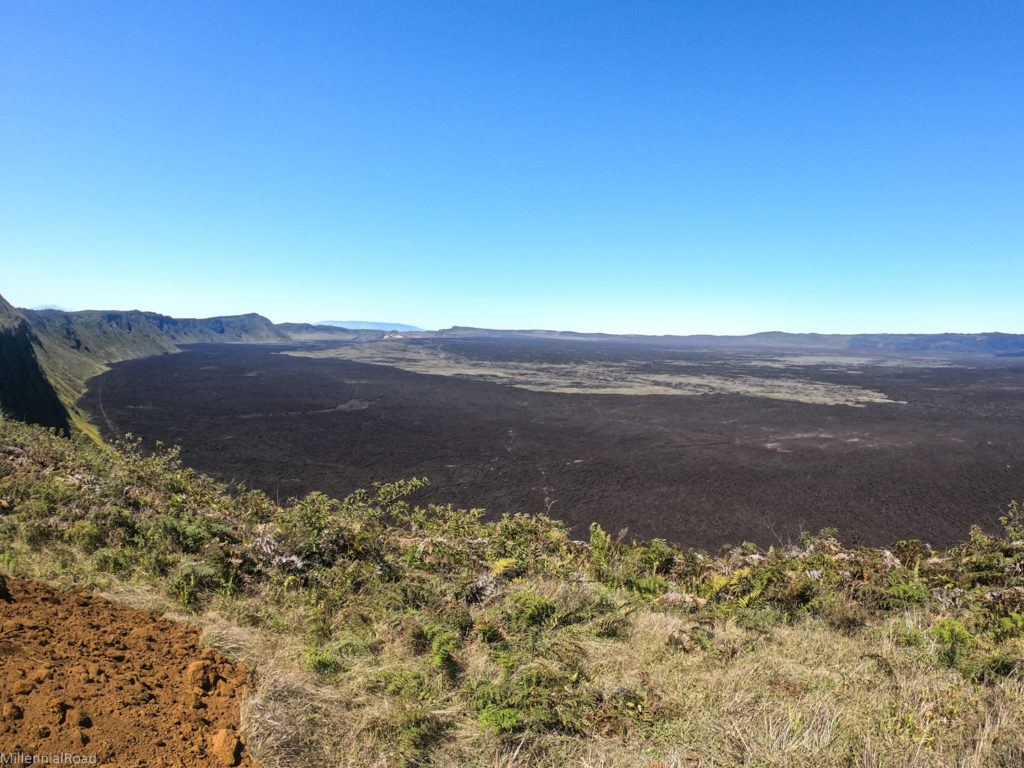
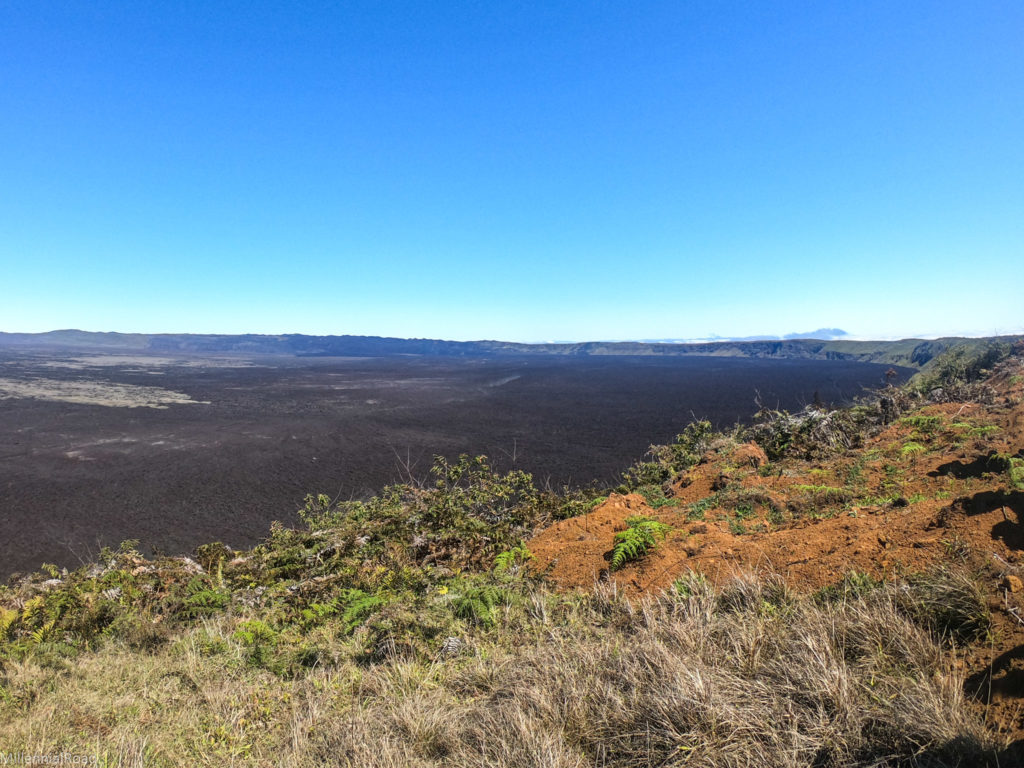
Leave a Reply